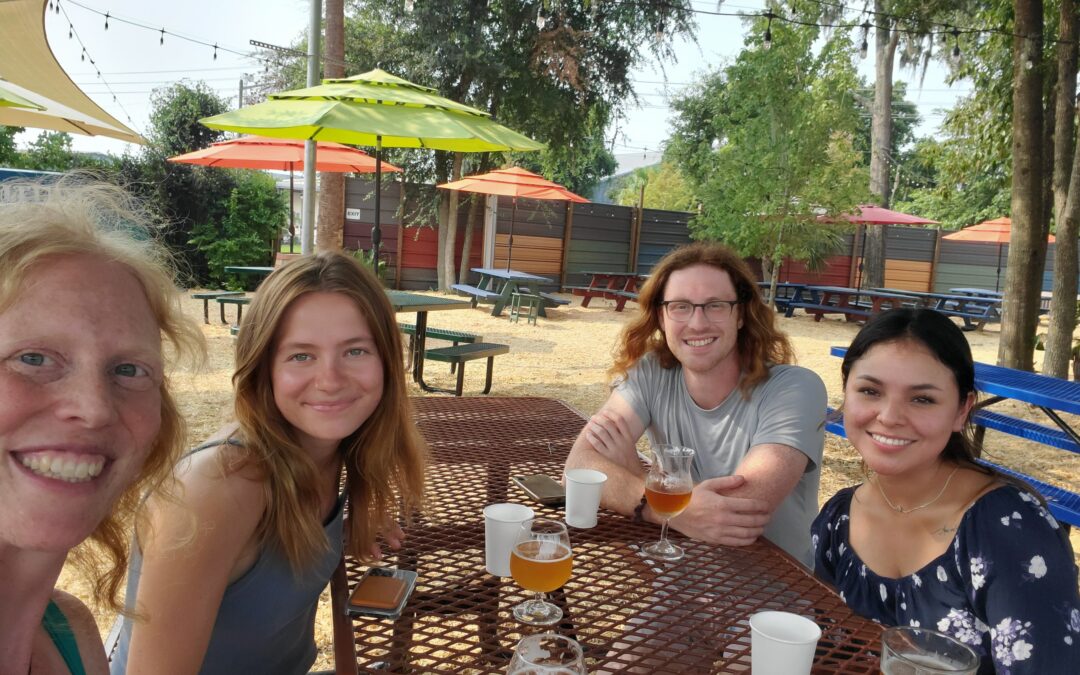After a very successful and insightful field season in 2022, Ash, Ben and Agnes are back to the field to study buzz-pollination in the small Melastomataceae genus Rhexia! Rhexia represent the only genus in the family which has colonized more temperate regions (although Florida feels quite tropical!), and especially in the South-Eastern US, multiple species of Rhexia commonly co-flower. This is a wonderful setup for studying how buzzing bee pollinators are shared among co-flowering species, or whether closely related co-flowering Melastomataceae have evolved adaptations to partition the niche of buzzing bees.
The ultimate goal of our buzz-pollination project is to understand whether adaptations to different bee pollinators, especially when species co-flower, has led to the stunning diversity of buzz-pollinated Melastomataceae floral phenotypes. More than 5000 species in the family are adapted to this specialized pollination strategy where bees extract pollen rewards from flowers through the application of mechanical vibrations. In many buzz-pollinated lineages, like the mega-genus Solanum, buzz-pollinated flowers are relatively conserved in terms of morphological variability, and all converged into the “Solanum-type” flower with reflexed petals and stamens forming a cone in the floral center. In Melastomataceae, on the other hand, Solanum-type flowers exist alongside a large diversity of different floral phenotypes, including open flowers with stamens bearing appendages in many different shapes, sizes and colors, with complex thecal structures and variable orientations of stamen pores (where pollen is released) and stigmas (where pollen is picked up from the bee).
Our Rhexia fieldwork is embedded into a big new project on buzz-pollination biomechanics that got funded in March 2023 through the Austrian Science Fund FWF. Ben Lazarus and Ash Kerber are taking the lead on the biological side of things, doing pollinator observations, color and scent sampling as well as experiments where they artificially vibrate flowers of different Melastomataceae species to understand subtle biomechanical adaptations to different bee pollinators. Meanwhile, Chris Schwaer at the Technical University of Vienna is combining high-speed videotaping, laser vibrometry and Finite Element Analyses of 3D micro-CT scans of stamens to understand motion responses of stamens to different types of vibrations.
If you want to hear more about what we have found in this project so far, and happen to go to Botany 2023, check out my talk on July 24th at 8am in Reproductive Processes!
